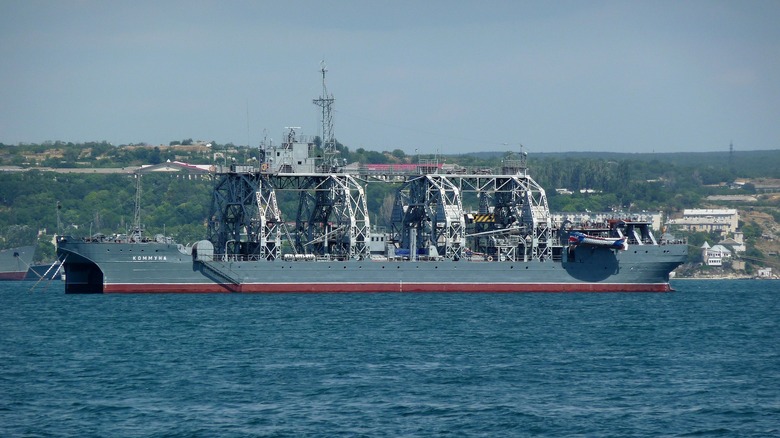This Russian Navy Ship Is Over 100 Years Old And Is Still In Service Today
The year was 1912. The world was still a few years away from the Great War and five years prior to the Bolshevik Revolution. In March, the first person ever jumped from a plane (with a parachute) over St. Louis, Missouri. The following month, the RMS "Titanic" hit an iceberg and sank off Newfoundland.
And in November, in Saint Petersburg, Russia, the keel of the "Volkhov" was first laid, beginning its official construction. The Russian Imperial Navy originally meant for it to be a submarine tender, which in landlubber terms means a boat that provides services and supplies to submarines. It first launched in 1913 and was commissioned in 1915, serving with the Baltic fleet that included rescue and salvage operations.
The "Volkhov's" design borrowed heavily from a similar U-boat salvage tug built by the Germans called the SMS "Vulkan." It sailed on double-hulled catamarans with two heavy-duty lifting frames straddling above that could lift submarines up and out of the water and have it rest neatly between the hulls to be worked on.
The "Volkhov" sat 315 feet long with a crew of 99. When fully loaded with supplies — such as 50 tons of fuel, several torpedoes, and additional crew members for the subs — it had a displacement of 3,100 tons. In December 1922, she was renamed "Kommuna" and reclassified from a "salvage ship" to a "rescue ship."
While one might think that a ship that first set sail 110 years ago would have long since been scrapped or be sitting in a naval museum somewhere, such is not the case with the "Kommuna."
[Image by George Chernilevsky via Wikimedia Commons | Cropped and scaled | CC BY-SA 4.0]
Don't count this Centenarian ship out just yet
Not only is the "Kommuna" still floating, but it's still used by the Russian fleet to this very day, making it the oldest active naval vessel on the planet. It has sailed under every iteration of Russia (the Imperials, Soviets, and Russian Federation) since her construction and survived both World Wars and a revolution.
When Nazi Germany invaded Russia in 1941, the "Kommuna" was instrumental during the 900-day siege of Leningrad. While receiving considerable damage, she still recovered tanks, vehicles, and supplies that had either sunk on other ships or fallen through the ice. Furthermore, she is credited with raising dozens of submarines and ships during the course of the war.
In 1967 she was retrofitted, equipped with small deep-dive submersibles and ROVs (Remotely Operated Vehicles), and sent to the Black Sea for recovery and salvage missions. In 1974 the "Kommuna" was equipped with a DSRV (Deep Submergence Rescue Vehicle) and has rescued over 150 subs, ships, and even the occasional airplane.
In April 2022, the flagship of Russia's Black Sea Fleet (the "Moskva") may or may not have been hit by Ukrainian Neptune missiles. The Russians claimed a fire started on board which caused the damage but whatever the case, the "Moskva" sank and the Russian Navy sent the over-a-century-old "Kommuna" out to salvage what it could.
